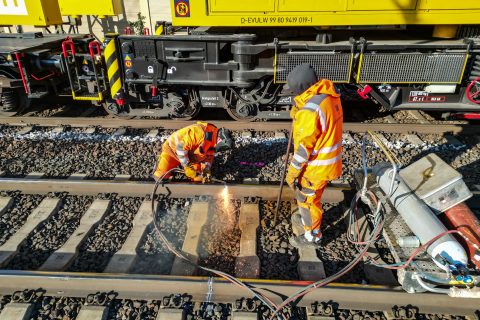How can customs be smart? Practices and ideas from the Netherlands

The Netherlands has been playing an important role in the worldwide logistics industry. In addition to its unique geographical location, an efficient customs system further strengthens its position as a logistics hub. In order to keep up with the current trend towards digitalisation and to stay ahead in the ever changing industry, Dutch customs uses intelligent data platforms to simplify procedures and achieve smart customs. At the same time, further research is steadily underway.
The digitalisation process of Dutch Customs was the topic of Friday’s webinar, the first in a series of webinars about smart logistics in the Netherlands. The webinar was orgnaised by ISEA, the Consul General of the Kingdom of the Netherlands in Chongqing with the support of HIDC, Railfreight.cn and Floral Technology Training and Promotional Center in Yunnan, China. On 16 October, Mostafa Aminl, Customs Attache of the Embassy of the Kingdom of the Netherlands, Frank Heijmann, Head of Trade Relations of Customs Administration of the Netherlands National Office, and Professor Albert Veenstra, Scientific Director of the Dutch Institute presented the webinar.
ABC strategic objectives
The strategic objectives of Dutch Customs are presented as ABC: A for Remittance, B for Protection and C for Competitiveness. Under the ABC objectives, Customs is the contractor and supervisor of 7 legislative departments. Customs is committed to strengthening the competitiveness of Dutch and European business and the introduction of Union Customs Code (UCC), adds Mostafa. He continues that another important goal in the current information age is innovation. The modernisation of customs is on the agenda as well as in the spotlight.
Data Pipeline
In his speech, Frank explains how Dutch Customs’ smart enforcement achieves smooth logistics. From his perspective, customs is not just limited to administration and supervision, but should become rather an efficient participant of the supply chain. Dutch Customs applies a risk-based approach to its data management. The flow of goods are dealt with separately according to its different sources: the color blue stands for non-certified companies, green for certified companies, and yellow for certified & non-certified companies. With the information already stored in the system, goods from certified companies are less risky. Therefore, the focus of inspection will be on unfamiliar (especially blue) goods, in order to reduce the workload of customs and increase the efficiency.

how the concept of data pipeline is applied in practice now
The predictability of goods is based on the integration and analysis of raw data collected from different parties in the supply chain. Dutch Customs created a data pipeline concept. In this business concept, all the business sectors are sharing their information in one single environment. Frank explains, “For example, from exporters, warehouses to forwarders and so on, all the parties have access to the source information and use the information provided initially by the exporters. Customs can use this single source of information for risk prediction.” The whole process is fully automated, with participants working from the CRIS dashboard to update data in real time. It’s not just a system for customs, it’s a system for the whole business model,” he says confidently. One current running project in cooperation with a Chinese company, called E-gateway, is based on this model, which aims at the data sharing in the field of e-commerce.
Future Development
Based on Frank’s innovative concept of data pipeline and its practice in e-commerce, Albert elaborates it further in the research field. He argues that the sources of e-commerce goods are often dispersed, with a lot of uncertainty, and that the separate declaration of many small pieces of goods will increase the time for customs formality. The value of the goods will probably decreases due to time waste. He believes that it’s important to design a new supervision regime for e-commerce by using real-time data. Also, a strong value in developing smart classification tools for e-commerce goods should be seen.
Notably, he also shared a carbon footprint accounting model for sustainability of the supply chain. It’s basically about reducing carbon dioxide emission by giving a certain unified measurement like per package or per 10 kilos. In this way, the CO2 data can be collected in every step in the chain. Based on this, he noted that “some sort of taxation mechanism at the border to correct for CO2 content of products.”

Follow the topic
SmartcCustoms will surely contribute to the efficient and sustainable development of global supply chains. If you are interested in the topic of smart logistics, you can follow our next webinars on the topic of smart multimodal transportation and smart flower cold chain here.
Author: Huilin Shi
You just read one of our premium articles free of charge
Want full access? Take advantage of our exclusive offer






